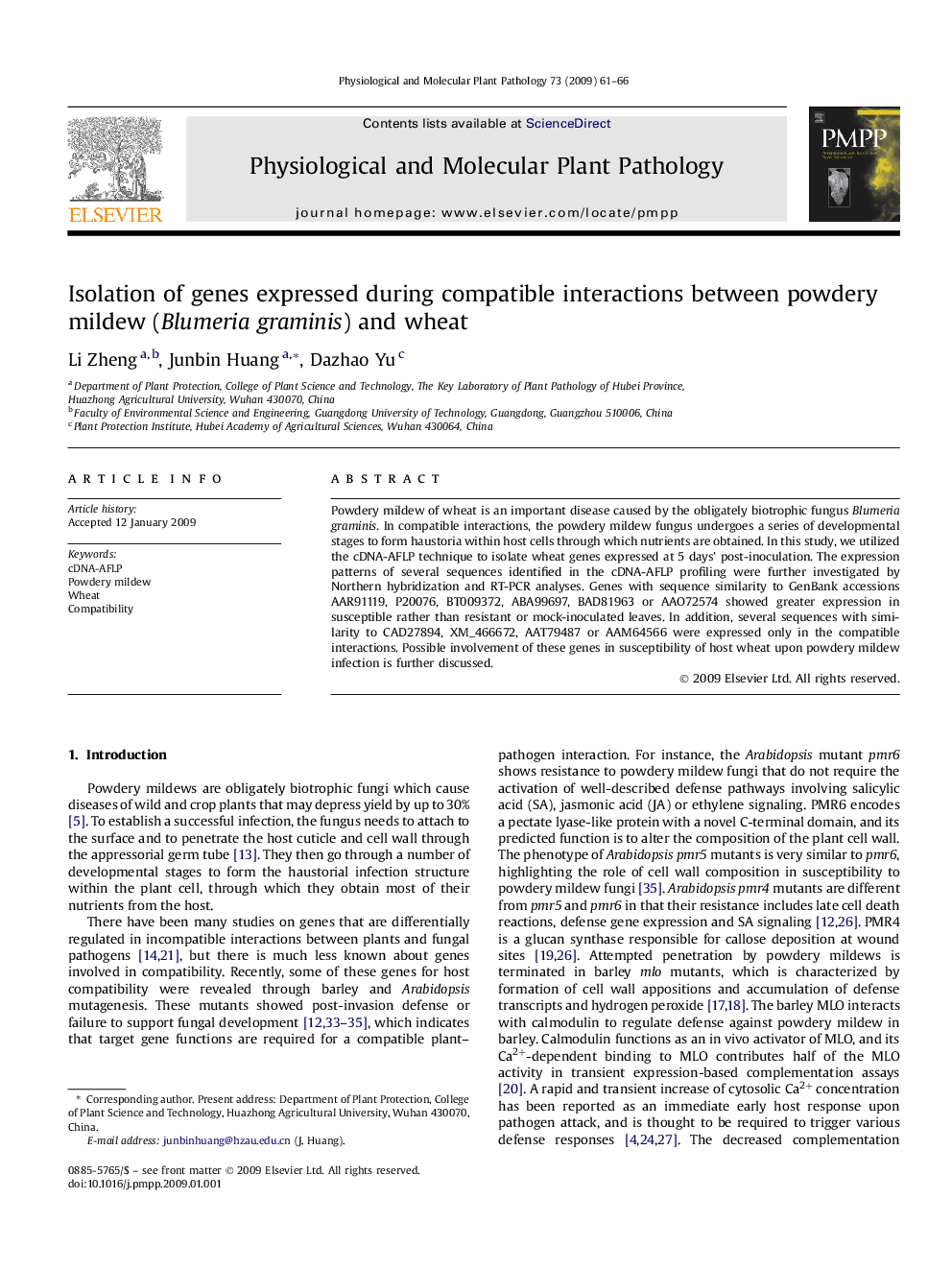| Article ID | Journal | Published Year | Pages | File Type |
|---|---|---|---|---|
| 2836629 | Physiological and Molecular Plant Pathology | 2008 | 6 Pages |
Powdery mildew of wheat is an important disease caused by the obligately biotrophic fungus Blumeria graminis. In compatible interactions, the powdery mildew fungus undergoes a series of developmental stages to form haustoria within host cells through which nutrients are obtained. In this study, we utilized the cDNA-AFLP technique to isolate wheat genes expressed at 5 days' post-inoculation. The expression patterns of several sequences identified in the cDNA-AFLP profiling were further investigated by Northern hybridization and RT-PCR analyses. Genes with sequence similarity to GenBank accessions AAR91119, P20076, BT009372, ABA99697, BAD81963 or AAO72574 showed greater expression in susceptible rather than resistant or mock-inoculated leaves. In addition, several sequences with similarity to CAD27894, XM_466672, AAT79487 or AAM64566 were expressed only in the compatible interactions. Possible involvement of these genes in susceptibility of host wheat upon powdery mildew infection is further discussed.
